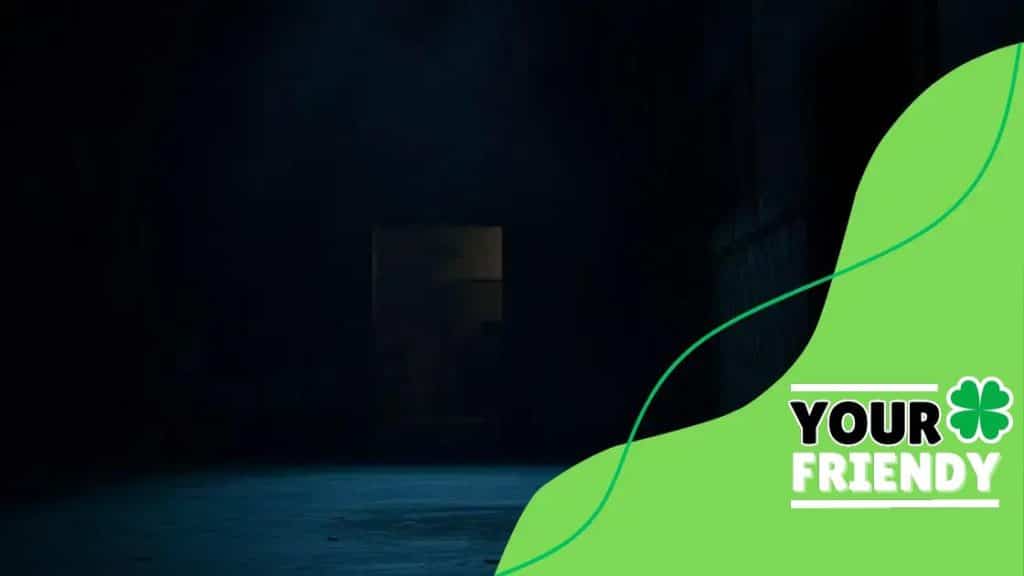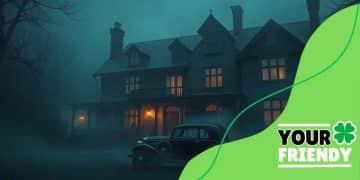Exploring human fears in suspense dramas

Anúncios
Exploring human fears in suspense dramas involves key elements like character development, atmospheric settings, sound design, and cinematic techniques that heighten tension and emotionally engage audiences.
Exploring human fears in suspense dramas invites us into the complex world of anxiety and anticipation. Have you ever wondered what makes these stories so gripping? Let’s dive into how fear shapes our experience.
Anúncios
Understanding the psychology of fear in drama
Understanding the psychology of fear in drama reveals how deeply our emotions are intertwined with storytelling. Fear is a potent emotion that can elicit strong reactions. In dramas, this feeling is often used to heighten tension and keep viewers on the edge of their seats.
When we watch suspenseful scenes, our brains react as if we are in danger. This connection is due to our natural instincts. Our bodies release adrenaline, preparing us to either fight or flee.
The impact of fear on storytelling
Fear enhances the storytelling experience in many ways. It can:
Anúncios
- Create empathy for characters in distress
- Encourage viewers to engage with the plot
- Invite personal reflection on their own fears
Understanding how fear affects audiences is essential for writers. They can use this knowledge to craft gripping narratives that resonate with their audience’s experiences.
Common psychological triggers
Several psychological triggers evoke fear in viewers. These include:
- Uncertainty: Not knowing what will happen next creates tension.
- Isolation: Characters alone in peril may elicit a stronger emotional response.
- The unknown: Fear of the unpredictable can drive anxiety.
A strong grasp of these triggers allows storytellers to manipulate emotions effectively, leading to a more immersive experience.
By leveraging the psychology of fear, creators can enhance the impact of their stories. As viewers process these emotions, they reflect upon their own fears, leading to discussions long after the credits roll.
Key elements of suspense that evoke fear
Key elements of suspense can evoke fear and keep viewers captivated in drama. Understanding these elements helps creators craft stories that resonate deeply with audiences. Suspense isn’t just about scary moments; it’s about building tension over time and creating a sense of anticipation.
One important element is time pressure. When characters face a ticking clock, the stakes feel higher. Viewers become anxious as they wonder if the character can succeed in time. This urgency compels them to stay engaged, wondering what will happen next.
The role of unpredictability
Another crucial aspect of suspense is unpredictability. When outcomes are uncertain, viewers feel a heightened sense of unease. Writers can play with this by introducing unexpected twists. For example, a character thought to be safe might suddenly find themselves in danger.
- Creative plot twists to enhance tension
- Revealing secrets at critical moments
- Setting up false expectations that lead to surprises
Additionally, the use of atmospheric settings can amplify feelings of fear. Locations such as dark forests or abandoned buildings can create a chilling ambiance. These settings play on primal fears, making everything feel more intense.
Sound design also plays a pivotal role. Sudden noises or tense music can make heart rates rise. The sensory experience heightens emotional investment, drawing viewers deeper into the story.
Character vulnerability
Furthermore, showing character vulnerability makes audiences anxious about their fates. When the hero is flawed or faces insurmountable odds, viewers relate to their struggles. This emotional connection amplifies the suspense, as people fear for characters they truly care about.
By combining these elements—time pressure, unpredictability, atmospheric settings, effective sound design, and character vulnerability—stories can effectively evoke fear and captivate audiences. The dance between anticipation and dread makes suspense thrilling and keeps viewers on the edge of their seats.
Character development and its impact on audience emotions

Character development is key to enhancing audience emotions in drama. When viewers connect with characters, their feelings deepen, making the experience more impactful. Strongly written characters can evoke a range of emotions, from empathy to fear, leading to a more immersive journey for the audience.
Well-developed characters often have clear motivations that drive their actions. When audiences understand why a character behaves a certain way, they can relate on a personal level. This connection creates a sense of investment in the character’s fate, amplifying emotional responses.
The importance of flaws
Another vital part of character development is the presence of flaws. Characters who face challenges or make mistakes feel more human. These imperfections allow viewers to see parts of themselves in these characters, making their struggles feel real.
- Flaws lead to growth and transformation.
- They create relatable struggles that audiences can empathize with.
- Audiences root for characters to overcome their weaknesses.
Furthermore, the relationships between characters influence the emotions that viewers feel. When tension rises between two characters, it can create an intense atmosphere. The way characters interact shapes viewers’ emotional experiences, leading to feelings of anxiety or joy.
Changing arcs and resolutions
Characters who undergo significant change throughout a story resonate deeply with audiences. Viewers love seeing transformation. These changes can reflect personal growth, redemption, or even a descent into darker paths. Such arcs can provoke powerful emotions.
Thus, a well-crafted character arc holds the audience’s interest. As they watch a character evolve, they ponder their journeys and life choices, fostering deeper emotional connections. Overall, effective character development profoundly impacts audience emotions, making for a memorable viewing experience.
The role of setting in amplifying fear
The role of setting in amplifying fear is crucial in suspense dramas. A well-crafted environment can evoke emotions and enhance tension. Settings can transform ordinary moments into terrifying experiences, making viewers feel palpably apprehensive.
For instance, when a story unfolds in a dark, abandoned house, every creak and shadow can instill fear. The isolation of such a setting allows viewers to fully immerse themselves in the atmosphere. The sense of loneliness heightens their anxiety and keeps them on edge.
Types of settings that evoke fear
Various types of settings can be effectively used to amplify fear:
- Dark and enclosed spaces: places like basements or small rooms can trigger feelings of claustrophobia.
- Narrow alleyways: these can create a sense of danger lurking around every corner.
- Foreboding natural environments: forests or mountains can evoke feelings of being lost or hunted.
Each of these settings can heighten the emotional stakes, forcing the audience to confront their deepest fears. By emphasizing the scariness of the location, creators can craft a more engaging viewing experience.
Atmospheric elements
Additionally, atmospheric elements play a significant role in setting the mood. Factors like weather can enhance fear. A stormy night with howling winds adds to the dread of a horror moment. The sound of rain tapping against windows can create an unsettling background noise that unnerves viewers.
Lighting techniques also contribute to the effect. Dim lighting with harsh shadows can obscure visibility, creating suspense about what lurks in the darkness. This uncertainty keeps viewers anticipating the next scare.
In conclusion, the setting serves as a powerful tool in suspense dramas. A carefully designed environment not only supports the narrative but also amplifies fear, drawing the audience deeper into the story and holding their attention tightly.
Cinematic techniques used to enhance suspense
Cinematic techniques play a vital role in enhancing suspense in films and dramas. These techniques draw viewers into the story and keep them on the edge of their seats, eager to see what happens next. Understanding these methods can help filmmakers create more engaging narratives.
One key technique is the use of close-ups. When the camera zooms in on a character’s face, it captures their emotions. This helps the audience feel what the character feels, increasing the tension. The subtle changes in expression can convey fear, anticipation, or dread.
Sound design and music
Another essential element is sound design. The sounds used in a scene create mood and emotion. For example, a sudden loud noise can startle viewers, while a slow, creeping score builds anticipation. By manipulating sound, filmmakers can effectively enhance the suspenseful atmosphere.
- Foreshadowing sounds: sounds that hint at future events can create unease.
- Silence: moments of quiet can increase tension, making audiences hold their breath.
- Dynamic shifts: changing music from cheerful to ominous can frame a scene dramatically.
Camera angles also contribute significantly. Using low-angle shots can make characters appear powerful and threatening, increasing the sense of danger. Conversely, high-angle shots can make characters seem vulnerable, amplifying audience concern.
Editing techniques
Another technique is rapid editing during thrilling scenes. Quick cuts can heighten the sense of urgency and chaos, making viewers feel overwhelmed. The pacing of the editing can mirror the characters’ emotions, drawing audiences deeper into the experience.
Additionally, using lighting creatively can amplify tension. Low lighting creates shadows, leading to uncertainty about what might be lurking nearby. Flickering lights can add to the feeling of instability, increasing suspense throughout the scene.
By employing these cinematic techniques—close-ups, sound design, camera angles, and lighting—filmmakers can masterfully enhance suspense. These tools work together to evoke emotions and keep audiences fully engaged in the story.
FAQ – Common Questions About Suspense Dramas
What are the key elements that create suspense in dramas?
Key elements include character development, atmospheric settings, sound design, and cinematic techniques that evoke emotions and keep viewers engaged.
How does character development affect audience emotions?
Well-developed characters allow viewers to empathize and connect, making their journeys more impactful and emotional.
What role does sound design play in suspenseful storytelling?
Sound design creates mood and tension, using effects and music to enhance the emotional experience and amplify fear.
How can settings influence the feeling of suspense?
Settings can evoke fear through their ambiance, using dark or isolated locations to create an unsettling atmosphere that heightens tension.





